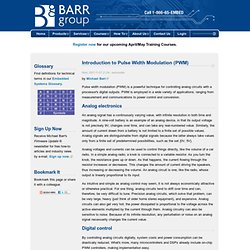

Development Boards - Rainbowduino LED driver platform - Atmega 328 - SKU: MCI-TDD-00870. Best way to control 75 LEDs with Arduino. RGB LED Strips. We love some good LED blinking as much as the next person but after years of LED-soldering we need something cooler to get us excited.

Sure there are RGB LEDs and those are fun too but what comes after that? Well, we have the answer: LED Strips! These are flexible circuit boards with full color LEDs soldered on. They take a lot of LED-wiring-drudgery out of decorating a room, car, bicycle, costume, etc. The ones we carry are also waterproof (although not all are). There are two basic kinds of LED strips, the "analog" kind and "digital" kind.
The Digital-type strips work in a different way. You can buy waterproof analog-type RGB LED strips by the meter at the Adafruit shop! Software. So whats going on. basically we've set the arduino up to respond to a particular message. this message consists of a header (the letter "C") a dud byte (some strange serial problems caused this to be implemented) and the bytes of data (R G B respectively) All processing is doing is generating these messages based on a pixel in an image, when we click the mose location is recorded and the message is built and sent to the audrino over a serial connection. See the attached files for the software for this project, hitting run in processing should bring up a screen like the one below, although it will depend on what image you choose to load.
ColourMap goes in processing RGB_LED_arduino_code goes in (you guessed it) arduino. Make sure you load this onto the arduino before you run the processing file or it wont do anything. if you having trouble check the following: if your still having trouble post a comment below and I'll do my best to answer it. Arduino RGB LED Lamp + 4bit LCD Display. This is my first instructable !!! Yay.. Before I continue. I do not go into details of how to cut the wood, or piece everything together. I freestyled the entire build process, whatever came to mind is what I reproduced. The point of this instructable is to be able to create the circuit, program the arduino, and create something of your own imagination. Also this instructable is meant for people who are familiar with the ever so popular Arduino !!!
Alright now a little explanation what this exactly is. Modes : 1) Hue Cycle : This cycles through the hue spectrum. 2) Hue Selection : Scroll the wheel (potentiometer) to select the color you chose. 3) Random Hue : The arduino randomly selects a target RGB color. The following video is the creation of the Arduino controlled RGB LED Lamp from start to end. RGB LED Shield V1.4 Kit [OSK101E1P] - $35.00. Introduction to Pulse Width Modulation (PWM) By Michael Barr Pulse width modulation (PWM) is a powerful technique for controlling analog circuits with a processor's digital outputs.

PWM is employed in a wide variety of applications, ranging from measurement and communications to power control and conversion. Analog electronics An analog signal has a continuously varying value, with infinite resolution in both time and magnitude. A nine-volt battery is an example of an analog device, in that its output voltage is not precisely 9V, changes over time, and can take any real-numbered value.
Analog voltages and currents can be used to control things directly, like the volume of a car radio. As intuitive and simple as analog control may seem, it is not always economically attractive or otherwise practical. Digital control By controlling analog circuits digitally, system costs and power consumption can be drastically reduced. In a nutshell, PWM is a way of digitally encoding analog signal levels. Figure 1 shows three different PWM signals. Www.mikmo.dk/misc/led_hook_up.pdf.